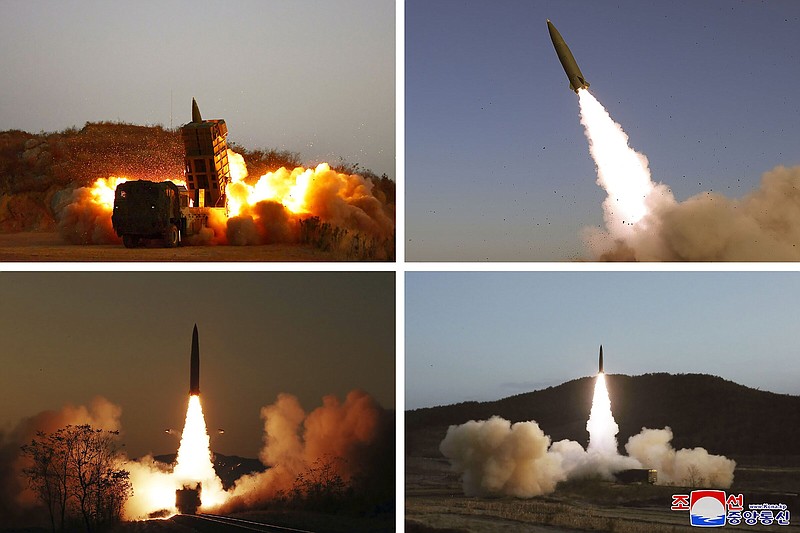SEOUL, South Korea -- North Korea's military said Monday that its recent barrage of missile tests were practices to "mercilessly" strike key South Korean and U.S. targets such as air bases and operation command systems with a variety of missiles that likely included nuclear-capable weapons.
The North's announcement underscored leader Kim Jong Un's determination not to back down in the face of his rivals' push to expand their military exercises. But some experts say Kim also used their drills as an excuse to modernize his nuclear arsenal and increase his leverage in future dealings with Washington and Seoul.
North Korea fired dozens of missiles and flew warplanes toward the sea last week -- triggering evacuation alerts in some South Korean and Japanese areas -- in protest of massive U.S.-South Korean air force drills that the North views as an invasion rehearsal.
U.S. and South Korean officials responded they would further enhance their joint training events and warned the North that the use of nuclear weapons would result in the end of Kim's regime.
"The recent corresponding military operations by the Korean People's Army are a clear answer of [North Korea] that the more persistently the enemies' provocative military moves continue, the more thoroughly and mercilessly the KPA will counter them," the General Staff of North Korea's military said in a statement carried by state media.
It said the weapons tests involved ballistic missiles loaded with dispersion warheads and underground infiltration warheads meant to launch strikes on enemy air bases; ground-to-air missiles designed to "annihilate" enemy aircraft at different altitudes and distances; and strategic cruise missiles that fell in international waters about 50 miles off South Korea's southeastern coastal city of Ulsan.
The North's military said it also carried out an important test of a ballistic missile with a special functional warhead missioned with "paralyzing the operation command system of the enemy." This could mean a simulation of electromagnetic pulse attacks, but some observers doubt whether North Korea has mastered key technologies to obtain such an attack capability.
The North's military statement didn't explicitly mention a reported launch Thursday of an intercontinental ballistic missile aimed at hitting the U.S. mainland, though its main newspaper published a photo of an ICBM-like weapon as one that was used during last week's testing activities.
Some experts say many other North Korean missiles launched last week were short-range nuclear-capable weapons that place key military targets in South Korea, including U.S. military bases there, within striking range.
Later Monday, South Korea's military disputed some of the North's accounts of its missile tests. Spokesperson Kim Jun-rak said South Korea didn't detect the North's cruise missile launches and that it's also notable that North Korea didn't mention what Seoul assessed as an abnormal flight by an ICBM.
This year's "Vigilant Storm" air force drills between the United States and South Korea were the largest-ever for the annual fall maneuvers. The drills involved 240 warplanes including advanced F-35 fighter jets from both countries. The allies were initially supposed to run the drills for five days ending on Friday, but extended the training by another day in reaction to the North's missile tests.
Information for this article was contributed by Kim Tong-hyung and Daria Litvinova of The Associated Press.
